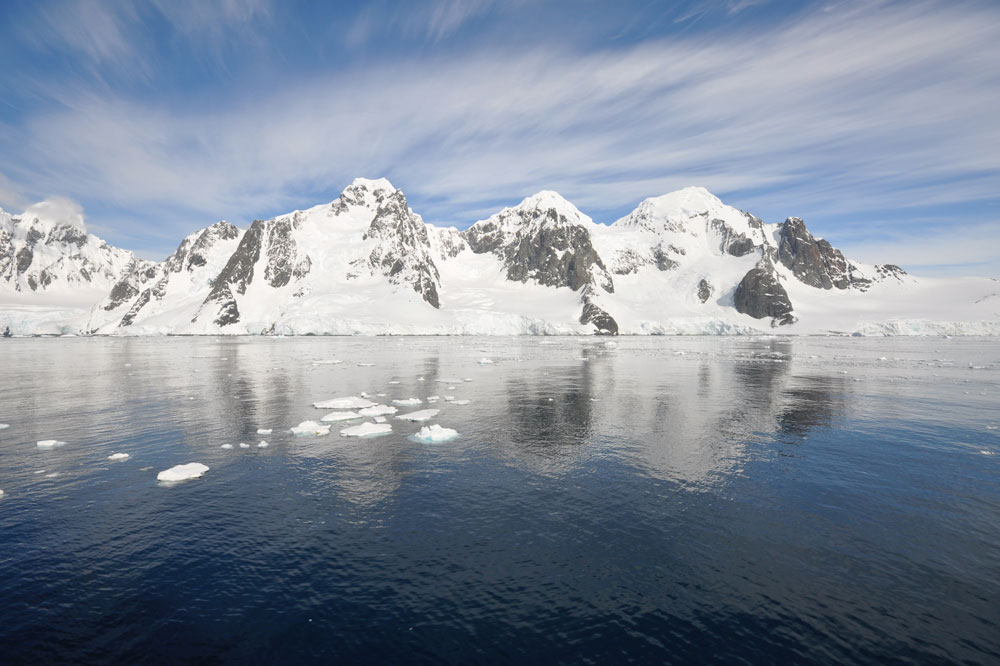Story
Antarctic krill use 'hotspots' for spawning and nursery of their young
24 July 2019
New research, published today in PLOS ONE and led by PML, has shown how Antarctic krill (Euphausia superba), a key species in the Southern Ocean food web, choose different areas of the ocean at the various stages of their life cycle. This understanding of their distribution and movement is essential for conservation of this important food source, which forms the main diet for animals such as whales, seals and penguins.

Antarctic krill support a unique food web and are a valuable commercial fishery which is concentrated in the south-west Atlantic sector. Better understanding of the distribution of key events in krill’s life cycle is needed for regional management and conservation in this region.
Data over 41 years
As well as scientists from Plymouth Marine Laboratory, the study also includes researchers from British Antarctic Survey, National Oceanography Centre and the University of Southampton, with support from the Natural Environment Research Council and the World Wide Fund for Nature (WWF). The team compiled a large database with thousands of net hauls, comprising all available data from surveys of krill larvae that had been made over the last 41 years. They combined this with two other similar databases for the older krill, allowing them to compare the distribution maps of all the life cycle stages of krill for the first time.
'Hotspots' of krill larvae
The study reveals that although adults are widely distributed, spawning may only be successful over a very small fraction of this area, mainly in the shallower waters near the Antarctic Peninsula. This results in nearby ‘hotspots’ of early larvae, mainly in the Southern Scotia Sea. However, as the larvae grow to become juvenile krill, their distribution shifts inshore, concentrating over shelves along the northern Antarctic Peninsula.
This partitioning of the krill habitat may serve a useful purpose, either reducing competition for food within the early developmental stages of krill, or reducing cannibalism from adults on the small larvae. Whatever the reason, the study highlights the importance of the Antarctic Peninsula for the life cycle of krill. This area is also a prime target for the krill fishery and the findings emphasise the importance of careful regional management to protect the populations of krill and the food web that relies on this key species.

"Antarctic krill are the unsung heroes of the Southern Ocean..."
Lead author Frances Perry, a PhD student at Plymouth Marine Laboratory, commented: “Whilst fishing areas obviously overlap with areas of high adult density, this study shows for the first time that fishing also overlaps with spawning sites. It is important to protect these sites from the potential impacts of fishing. We need to understand the dynamics of this complex ecosystem so that it continues to support the diverse and commercially important Southern Ocean food web.”
Dr Angus Atkinson, Senior Ecologist at PML and an author on this paper, stated: “Given the current expansion of the krill fishery and the uncertain effects of climate change, there is an increasing need for managers to understand the dynamics of the krill stock. We were surprised at how localised the spawning areas were, and this knowledge will help a series of efforts towards a more a spatially-resolved management approach.”
Dr Simeon Hill, a Marine Ecologist at the British Antarctic Survey and an author on the paper, said: “The international fishery for Antarctic krill currently catches around a third of a million tonnes per year, which is a small percentage of the available krill. Catch limits are conservative and well enforced but it is also important to make sure that catches aren’t concentrated in places where krill spawn and where their young develop. The Commission for the Conservation of Antarctic Marine Living Resources (CCAMLR), which manages the krill fishery, is working to protect sensitive areas and this study has provided critical information to help with that work."
Dr Rod Downie, Chief Polar Adviser at WWF, said: “Antarctic krill are the unsung heroes of the Southern Ocean, feeding millions of penguins, seals and whales. These tiny creatures are the reason humpback whales migrate thousands of miles to feed in Antarctic waters every summer.
The Antarctic Peninsula is a hotspot where large numbers of krill, from eggs to adults, are found. However, the climate crisis and fishing interests are putting this unique habitat under threat. We need to protect this vital area for not only krill, but all the species that depend upon it to survive.”
Related information
The paper ‘Habitat partitioning in Antarctic krill: spawning hotspots and nursery areas’ is published this week in PLOS ONE